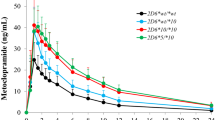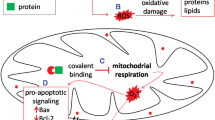Abstract
Objective
Cytochrome P450 2C9 and 2C19 (CYP2C9 and CYP2C19, respectively) genetic polymorphisms play an important role in phenytoin (PHT) metabolism. We have evaluated whether these genetic polymorphisms have an effect on PHT-induced neurological toxicity in Tamilian (ethnic group native to southern India) patients with epilepsy.
Methods
We studied 292 Tamilian patients who were taking PHT for the treatment of various epileptic seizures. PHT toxicity was defined on the basis of neurological signs of toxicity and further sub-classified into mild, moderate, and severe toxicity based on clinical severity. Genomic DNA was extracted from peripheral leukocytes and genotyped for CYP2C9*2, *3 and CYP2C19*2, *3 by PCR-restriction fragment length polymorphism analysis.
Results
Of the 292 patients in the patient cohort, 58 were clinically diagnosed to have PHT toxicity. When risk ratios were calculated for each mutant CYP2C9 genotype separately, the adjusted odds ratio for CYP2C9*1/*3 was found to be 15.3 (95% confidence interval 5.8–40.3, P < 0.0001) for the cases compared to controls. When the four single nucleotide polymorphisms of CYP2C9 and CYP2C19 were analyzed using a haplotype approach, significant difference in the distribution of the C-C-G-G haplotype was observed between the cases and controls.
Conclusion
Our results show that CYP2C9 genetic polymorphisms (particularly the *3 allele) were associated with high risk of epileptic patients developing PHT-induced neurological toxicity.
Similar content being viewed by others
References
Eadie MJ (1987) Neurological diseases. In: Sepight (ed) Avery’s drug treatment. Principles and practices of clinical pharmacology and therapeutics. Adis, Auckland, pp 01–64
Seger D (1990) Phenytoin and other anticonvulsants. In: Haddad LM, Winchester JF (eds) Clinical management of poisoning and drug overdose. WB Saunders, New York, pp 877–893
Aynacioglu AS, Brockmoller J, Bauer S, Sachse C, Guzelbey P, Ongen Z, Nacak M, Roots I (1999) Frequency of cytochrome P450 CYP2C9 variants in a Turkish population and functional relevance for phenytoin. Br J Clin Pharmacol 48:409–415
Hashimoto Y, Otsuki Y, Odani A, Takano M, Hattori H, Furusho K, Lui K (1996) Effect of CYP2C polymorphisms on the pharmacokinetics of phenytoin in Japanese patients with epilepsy. Biol Pharm Bull 19:1103–1105
Kerb R, Aynacioglu AS, Brockmoller J, Schlagenhaufer R, Bauer S, Szekeres T, Hamwi A, Fritzer-Szekeres M, Baumgartner C, Ongen HZ, Guzelbey P, Roots I, Brinkmann U (2001) The predictive value of MDR1, CYP2C9, and CYP2C19 polymorphisms for phenytoin plasma levels. Pharmacogenomics J 1:204–210
Mamiya K, Ieiri I, Shimamoto J, Yukawa E, Imai J, Ninomiya H, Yamada H, Otsubo K, Higuchi S, Tashiro N (1998) The effects of genetic polymorphisms of CYP2C9 and CYP2C19 on phenytoin metabolism in Japanese adult patients with epilepsy: studies in stereoselective hydroxylation and population pharmacokinetics. Epilepsia 39:1317–1323
Odani A, Hashimoto Y, Otsuki Y, Uwai Y, Hattori H, Furusho K, Inui K (1997) Genetic polymorphism of the CYP2C subfamily and its effect on the pharmacokinetics of phenytoin in Japanese patients with epilepsy. Clin Pharmacol Ther 62:287–292
Takanashi K, Tainaka H, Kobayashi K, Yasumori T, Hosakawa M, Chiba K (2000) CYP2C9 Ile359 and Leu359 variants: enzyme kinetic study with seven substrates. Pharmacogenetics 10:95–104
Rettie AE, Wienkers LC, Gonzalez FJ, Trager WF, Korzekwa KR (1994) Impaired (S)-warfarin metabolism catalysed by the R144C allelic variant of CYP2C9. Pharmacogenetics 4:39–42
Rettie AE, Haining RL, Bajpai M, Levy RH (1999) A common genetic basis for idiosyncratic toxicity of warfarin and phenytoin. Epilepsy Res 35:253–255
de Morais SM, Wilkinson GR, Blaisdell J, Nakamura K, Meyer UA, Goldstein JA (1994) The major genetic defect responsible for the polymorphism of S-mephenytoin metabolism in humans. J Biol Chem 269:15419–15422
de Morais SM, Wilkinson GR, Blaisdell J, Meyer UA, Nakamura K, Goldstein JA (1994) Identification of a new genetic defect responsible for the polymorphism of (S)-mephenytoin metabolism in Japanese. Mol Pharmacol 46:594–598
Bae JW, Kim HK, Kim JH, Yang SI, Kim MJ, Jang CG, Park YS, Lee SY (2005) Allele and genotype frequencies of CYP2C9 in a Korean population. Br J Clin Pharmacol 60:418–422
Kimura M, Ieiri I, Mamiya K, Urae A, Higuchi S (1998) Genetic polymorphism of cytochrome P450s, CYP2C19, and CYP2C9 in a Japanese population. Ther Drug Monit 20:243–247
Lea RA, Roberts RL, Green MR, Kennedy MA, Chambers GK (2008) Allele frequency differences of cytochrome P450 polymorphisms in a sample of New Zealand Maori. N Z Med J 121:33–37
Peyvandi F, Spreafico M, Karimi M, Zeinali S, Mannucci PM, Bianchi BA (2002) Allele frequency of CYP2C9 gene polymorphisms in Iran. Thromb Haemost 88:874–875
Scordo MG, Aklillu E, Yasar U, Dahl ML, Spina E, Ingelman-Sundberg M (2001) Genetic polymorphism of cytochrome P450 2C9 in a Caucasian and a black African population. Br J Clin Pharmacol 52:447–450
Scordo MG, Caputi AP, D’Arrigo C, Fava G, Spina E (2004) Allele and genotype frequencies of CYP2C9, CYP2C19 and CYP2D6 in an Italian population. Pharmacol Res 50:195–200
Xie HG, Prasad HC, Kim RB, Stein CM (2002) CYP2C9 allelic variants: ethnic distribution and functional significance. Adv Drug Deliv Rev 54:1257–1270
Yang JQ, Morin S, Verstuyft C, Fan LA, Zhang Y, Xu CD, Barbu V, Funck-Brentano C, Jaillon P, Becquemont L (2003) Frequency of cytochrome P450 2C9 allelic variants in the Chinese and French populations. Fundam Clin Pharmacol 17:373–376
Yukawa E, Mamiya K (2006) Effect of CYP2C19 genetic polymorphism on pharmacokinetics of phenytoin and phenobarbital in Japanese epileptic patients using non-linear mixed effects model approach. J Clin Pharm Ther 31:275–282
Watanabe M, Iwahashi K, Kugoh T, Suwaki H (1998) The relationship between phenytoin pharmacokinetics and the CYP2C19 genotype in Japanese epileptic patients. Clin Neuropharmacol 21:122–126
Bajpai M, Roskos LK, Shen DD, Levy RH (1996) Roles of cytochrome P4502C9 and cytochrome P4502C19 in the stereoselective metabolism of phenytoin to its major metabolite. Drug Metab Dispos 24:1401–1403
Kidd RS, Curry TB, Gallagher S, Edeki T, Blaisdell J, Goldstein JA (2001) Identification of a null allele of CYP2C9 in an African-American exhibiting toxicity to phenytoin. Pharmacogenetics 11:803–808
Lee AY, Kim MJ, Chey WY, Choi J, Kim BG (2004) Genetic polymorphism of cytochrome P450 2C9 in diphenylhydantoin-induced cutaneous adverse drug reactions. Eur J Clin Pharmacol 60:155–159
Ninomiya H, Mamiya K, Matsuo S, Ieiri I, Higuchi S, Tashiro N (2000) Genetic polymorphism of the CYP2C subfamily and excessive serum phenytoin concentration with central nervous system intoxication. Ther Drug Monit 22:230–232
Hennessy S, Leonard CE, Freeman CP, Metlay JP, Chu X, Strom BL, Bilker WB (2009) CYP2C9, CYP2C19, and ABCB1 genotype and hospitalization for phenytoin toxicity. J Clin Pharmacol 49:1483–1487
Citerio G, Nobili A, Airoldi L, Pastorelli R, Patruno A (2003) Severe intoxication after phenytoin infusion: a preventable pharmacogenetic adverse reaction. Neurology 60:1395–1396
McCluggage LK, Voils SA, Bullock MR (2009) Phenytoin toxicity due to genetic polymorphism. Neurocrit Care 10:222–224
Reich D, Thangaraj K, Patterson N, Price AL, Singh L (2009) Reconstructing Indian population history. Nature 461:489–494
Adithan C, Gerard N, Vasu S, Balakrishnan R, Shashindran CH, Krishnamoorthy R (2003) Allele and genotype frequency of CYP2C9 in Tamilnadu population. Eur J Clin Pharmacol 59:707–709
Jose R, Chandrasekaran A, Sam SS, Gerard N, Chanolean S, Abraham BK, Satyanarayanamoorthy K, Peter A, Rajagopal K (2005) CYP2C9 and CYP2C19 genetic polymorphisms: frequencies in the south Indian population. Fundam Clin Pharmacol 19:101–105
Adithan C, Gerard N, Vasu S, Rosemary J, Shashindran CH, Krishnamoorthy R (2003) Allele and genotype frequency of CYP2C19 in a Tamilian population. Br J Clin Pharmacol 56:331–333
Rosemary J, Surendiran A, Rajan S, Shashindran CH, Adithan C (2006) Influence of the CYP2C9 AND CYP2C19 polymorphisms on phenytoin hydroxylation in healthy individuals from south India. Indian J Med Res 123:665–670
Jose L, Binila C, Chandy SJ, Mathews JE, Mathews KP (2008) Acenocoumarol and phenytoin toxicity in the presence of CYP2C9 mutation. J Assoc Physicians India 56:250–252
Ramasamy K, Narayan SK, Chanolean S, Chandrasekaran A (2007) Severe phenytoin toxicity in a CYP2C9*3*3 homozygous mutant from India. Neurol India 55:408–409
Troupin AS, Ojemann LM (1975) Paradoxical intoxication-a complication of anticonvulsant administration. Epilepsia 16:753–758
Kutt H, Kokenge R, Winters W, Mcdowell F (1964) Diphenylhydantoin metabolism, blood levels, and toxicity. Arch Neurol 11:642–648
Sullivan-Klose TH, Ghanayem BI, Bell DA, Zhang ZY, Kaminsky LS, Shenfield GM, Miners JO, Birkett DJ, Goldstein JA (1996) The role of the CYP2C9-Leu359 allelic variant in the tolbutamide polymorphism. Pharmacogenetics 6:341–349
Sanger F, Nicklen S, Coulson AR (1997) DNA sequencing with chain terminating inhibitors. Proc Natl Acad Sci USA 74:5463–5467
Gerson B, Bell F, Chan S (1984) Antiepileptic agents–primidone, phenobarbital, phenytoin, and carbamazepine by reversed-phase liquid chromatography. Clin Chem 30:105–108
Rosemary J, Adithan C (2007) The pharmacogenetics of CYP2C9 and CYP2C19: ethnic variation and clinical significance. Curr Clin Pharmacol 2:93–109
Acknowledgments
We thank Dr. D.G. Shewade, Dr.Steven for reviewing the manuscript. We thank Mr. S. Rajan , Mrs. S. Mala and Mrs. B. Tamilarasi for technical assistance.
Funding
This study was funded by the Indian Council of Medical Research, New Delhi (Grant No: 53/17/2003-BMS).
Author information
Authors and Affiliations
Corresponding author
Electronic supplementary material
Below is the link to the electronic supplementary material.
Supplementary Table 1
CYP2C9 allele and genotype frequencies among epileptic patients without phenytoin toxicity (n = 234) and with phenytoin toxicity (n = 58). (DOC 35 kb)
Rights and permissions
About this article
Cite this article
Kesavan, R., Narayan, S.K. & Adithan, C. Influence of CYP2C9 and CYP2C19 genetic polymorphisms on phenytoin-induced neurological toxicity in Indian epileptic patients. Eur J Clin Pharmacol 66, 689–696 (2010). https://doi.org/10.1007/s00228-010-0817-2
Received:
Accepted:
Published:
Issue Date:
DOI: https://doi.org/10.1007/s00228-010-0817-2




